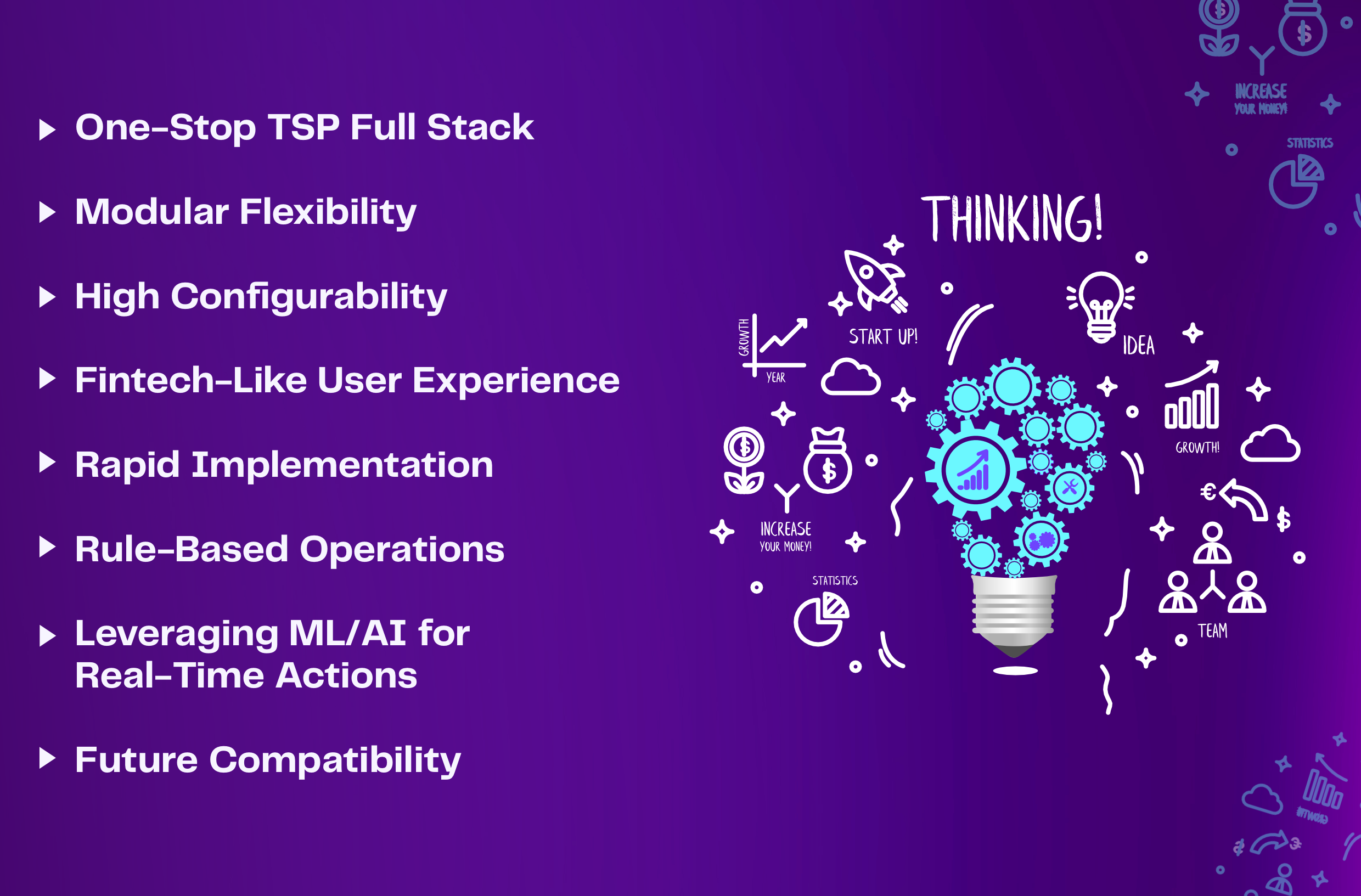Design Thinking in Credit Card Stack Development: Creating User-Centric Experiences
In today’s rapidly evolving financial landscape, where customer expectations are continually shifting, developing credit card stacks requires a strategic approach that places users at the center. Design thinking emerges as a powerful methodology for crafting credit card solutions that not only meet but exceed user expectations. Let’s explore how design thinking principles can be applied to create credit card stacks that resonate with modern consumers, leveraging the elements provided below:
1. Empowering Credit Card Issuance: A Unified Approach with One-Stop TSP Full Stack
A cohesive credit card issuance ecosystem is essential for seamless operations. By adopting a One-Stop Technology Service Provider (TSP) approach, integrating components like switch/processor, CCMS, UPI, ACS for 3DS, NCMC, Bank portal, co-brand portal, and a cardholder Mobile App, financial institutions can streamline processes and enhance user experiences. This consolidation enhances efficiency and provides a unified experience for both customers and financial institutions.
2. Modular Flexibility: Tailoring Solutions to Specific Needs
Every bank has unique requirements when it comes to credit card offerings. Modular flexibility allows banks to cherry-pick modules according to their needs, whether it’s a Rewards Engine, Instalment Plan/EMI module, NPA Management, or the entire stack. This approach ensures that the credit card solution aligns perfectly with the bank’s objectives and target market.
3. Highly Configurable for Diverse Credit Card Programs
Credit card programs cater to different customer segments and needs. They also work with different cobrand partners to power different use cases. A highly configurable credit card stack enables banks to orchestrate diverse programs seamlessly. Whether it’s secured/unsecured, retail/business/corporate, or charge/credit cards, the stack can adapt to different program requirements. This configurability empowers financial institutions to offer tailored solutions that resonate with their target audience.
4. Delivering a Fintech-Like User Experience
In today’s digital era, user experience is paramount. A customer-centric approach to mobile app design and user journey is essential for success. From DIY features to 100% digital onboarding, the mobile app must be intuitive, seamless, and user-friendly. By prioritizing user experience, banks can enhance engagement, loyalty, and satisfaction among their customers, setting themselves apart in a crowded market.
5. Rapid Implementation and Seamless Integration
Time is of the essence in credit card stack deployment. Banks need solutions that offer faster implementation, customization, and integration with minimal manual intervention. A well-designed stack should seamlessly integrate with existing systems like CBS, CRM, IVR, FRM, Collections System, Mobile Banking App, and Net Banking portal. This integration ensures operational efficiency and a cohesive user experience across all channels.
6. Rule-Based Operations: Ensuring Compliance and Personalisation
Compliance and personalization are two cornerstones of credit card operations. Rule-based systems within the credit card stack facilitate validations for regulatory compliance, including co-branding arrangements. Moreover, these systems allow for personalized actions at both aggregate and single-account levels, along with event-based notifications for consent and alerts, ensuring transparency and proactive communication with users.
7. Leveraging ML/AI for Real-Time Actions
Integrating machine learning and artificial intelligence enhances the capabilities of credit card stacks. Real-time actions such as fraud risk management and personalization of rewards/offers become more effective and efficient with ML/AI algorithms. By leveraging data analytics, banks can promptly detect fraudulent activities while delivering targeted offers that resonate with individual users, thereby increasing engagement and satisfaction.
8. Future Compatibility and Innovation
Anticipating future innovations and regulatory changes is crucial in the ever-evolving landscape of finance. A well-designed credit card stack is built from first principles, with scalability and adaptability to accommodate future advancements. For example, customization to support emerging technologies like Credit Line Management on UPI ensures that the stack remains future-proof, enabling banks to stay ahead of the curve while minimising costs.
In conclusion, design thinking offers a holistic approach to credit card stack development, emphasizing user-centricity, innovation, and efficiency. By embracing modular flexibility, configurability, and advanced technologies, financial institutions can create credit card solutions that not only meet the demands of today’s consumers but also adapt seamlessly to upcoming demand.
Authored by Astha Bishnoi, Manager – Partnership & Sales at CARD91







